[caption id="" align=“alignnone” width=“1280”] ESO astronaut Thomas Pesquet is currently residing in the International Space Station and captured this image of the lunar eclipse from his window. The moon was over Australia and the Pacific Ocean. Image credit: Twitter ESO @Thom_astro[/caption] [caption id=“attachment_9661091” align=“alignnone” width=“1280”]
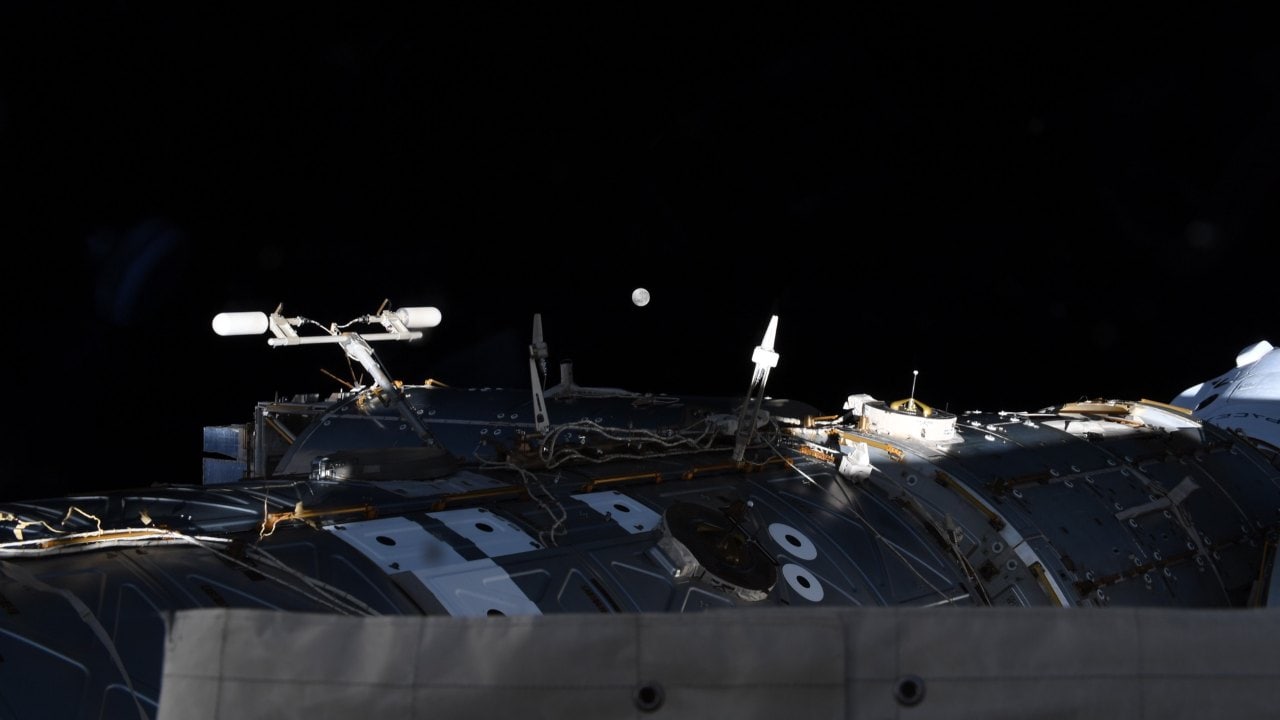 JAXA astronaut Akihiko Hoshide managed to catch a small glimpse of the lunar eclipse from his perch on the International Space Station. Image credit: Twitter @Aki_Hoshide[/caption] [caption id=“attachment_9660991” align=“alignnone” width=“1280”]
JAXA astronaut Akihiko Hoshide managed to catch a small glimpse of the lunar eclipse from his perch on the International Space Station. Image credit: Twitter @Aki_Hoshide[/caption] [caption id=“attachment_9660991” align=“alignnone” width=“1280”]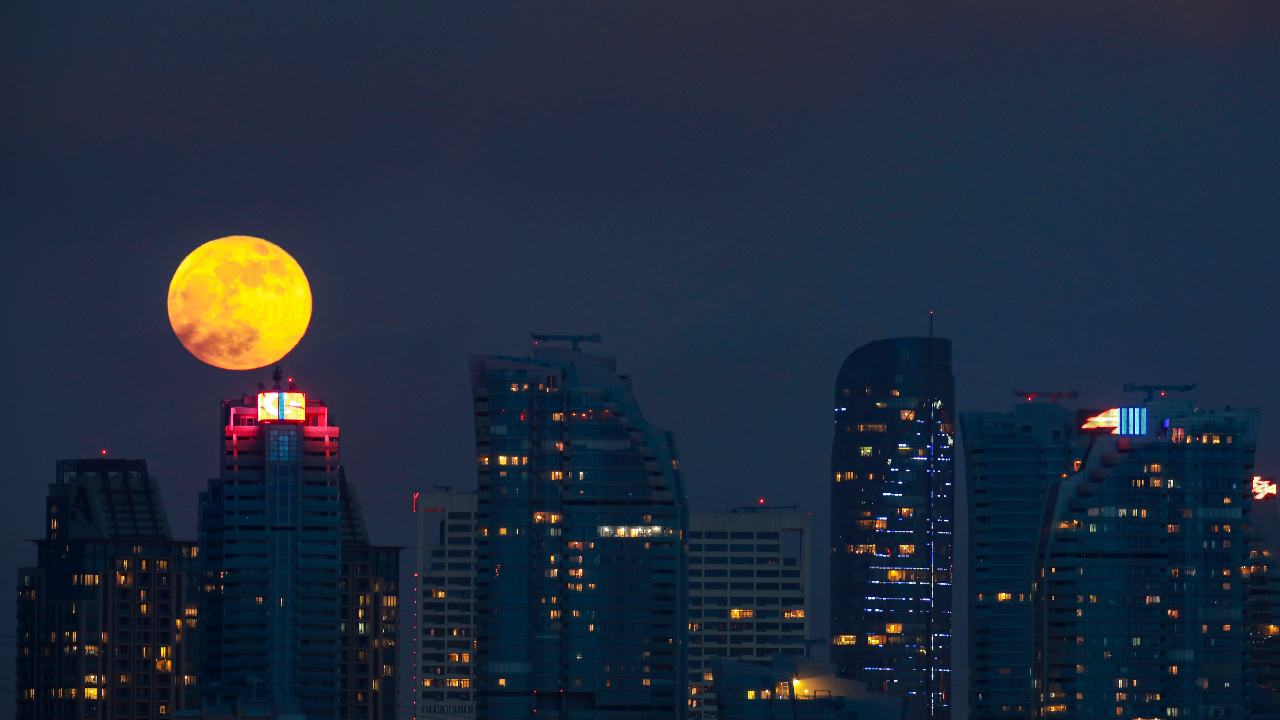 The supermoon rises over Maslak, the economic centre of Istanbul, on Wednesday, 26 May 2021. Image credit: AP Photo/Emrah Gurel)[/caption] [caption id="" align=“alignnone” width=“1280”]
The supermoon rises over Maslak, the economic centre of Istanbul, on Wednesday, 26 May 2021. Image credit: AP Photo/Emrah Gurel)[/caption] [caption id="" align=“alignnone” width=“1280”]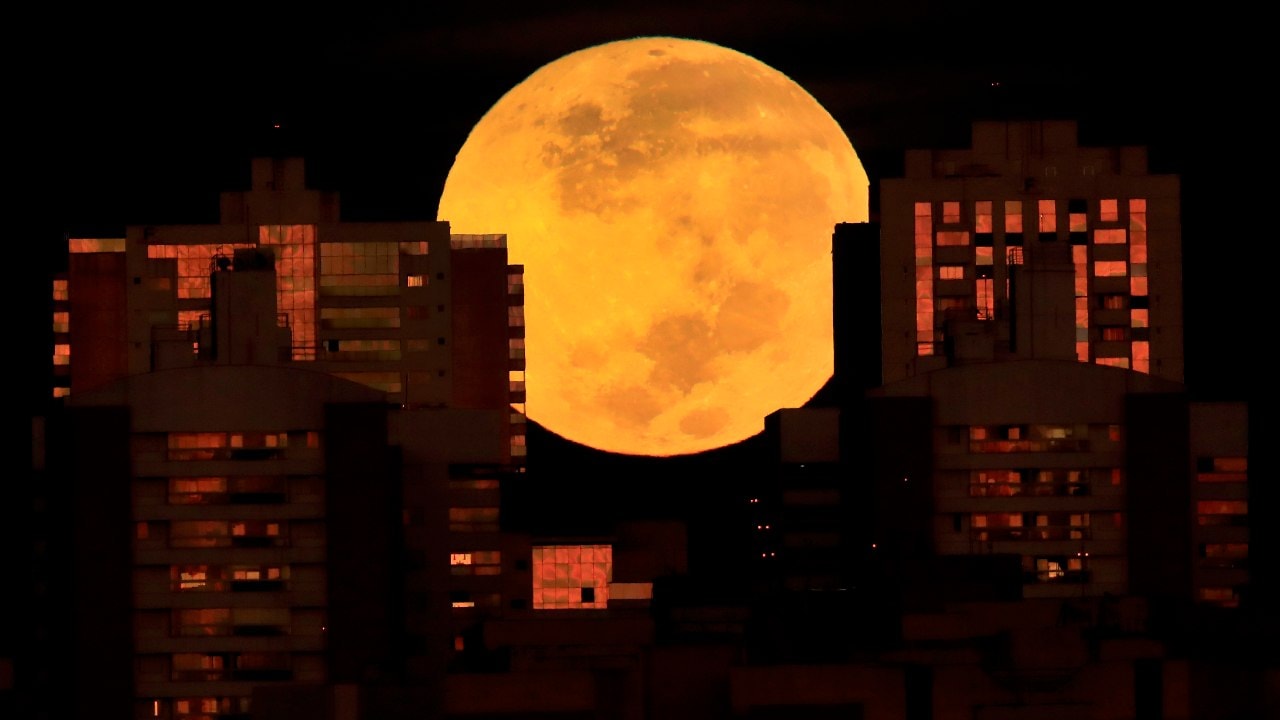 A total lunar eclipse is also called the Blood Moon because of the reddish tinge that appears on the moon during an eclipse. This phenomenon happens because the light from the Earth’s sunrise or sunset falls on the surface of the moon. A lunar eclipse is observed during dawn in Brazil. Image credit: AP Photo/Eraldo Peres)[/caption] [caption id=“attachment_9661011” align=“alignnone” width=“1280”]
A total lunar eclipse is also called the Blood Moon because of the reddish tinge that appears on the moon during an eclipse. This phenomenon happens because the light from the Earth’s sunrise or sunset falls on the surface of the moon. A lunar eclipse is observed during dawn in Brazil. Image credit: AP Photo/Eraldo Peres)[/caption] [caption id=“attachment_9661011” align=“alignnone” width=“1280”]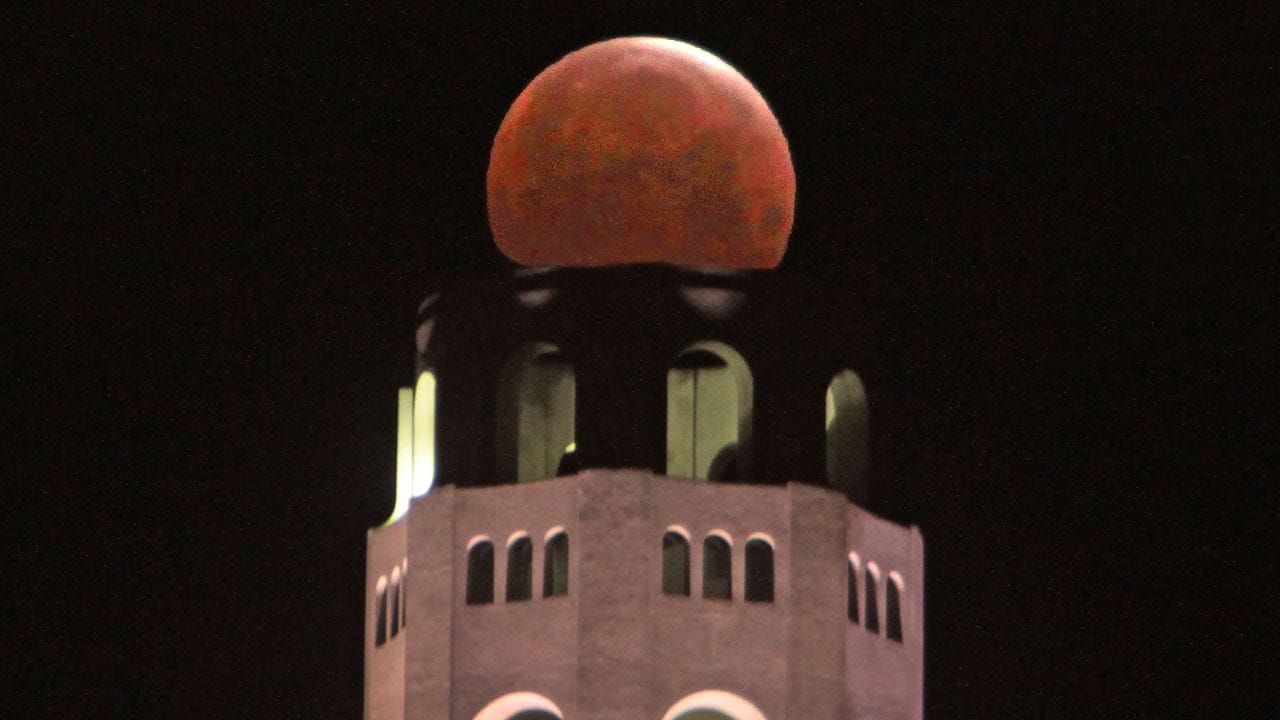 A lunar eclipse is seen over Coit Tower on Telegraph Hill in San Francisco early Wednesday, May 26, 2021. The blazing orange moon was visible from Pacific and the western half of North America, parts of South America and eastern Asia. Image credit: AP Photo/Frederic Larson[/caption] [caption id="" align=“alignnone” width=“1280”]
A lunar eclipse is seen over Coit Tower on Telegraph Hill in San Francisco early Wednesday, May 26, 2021. The blazing orange moon was visible from Pacific and the western half of North America, parts of South America and eastern Asia. Image credit: AP Photo/Frederic Larson[/caption] [caption id="" align=“alignnone” width=“1280”]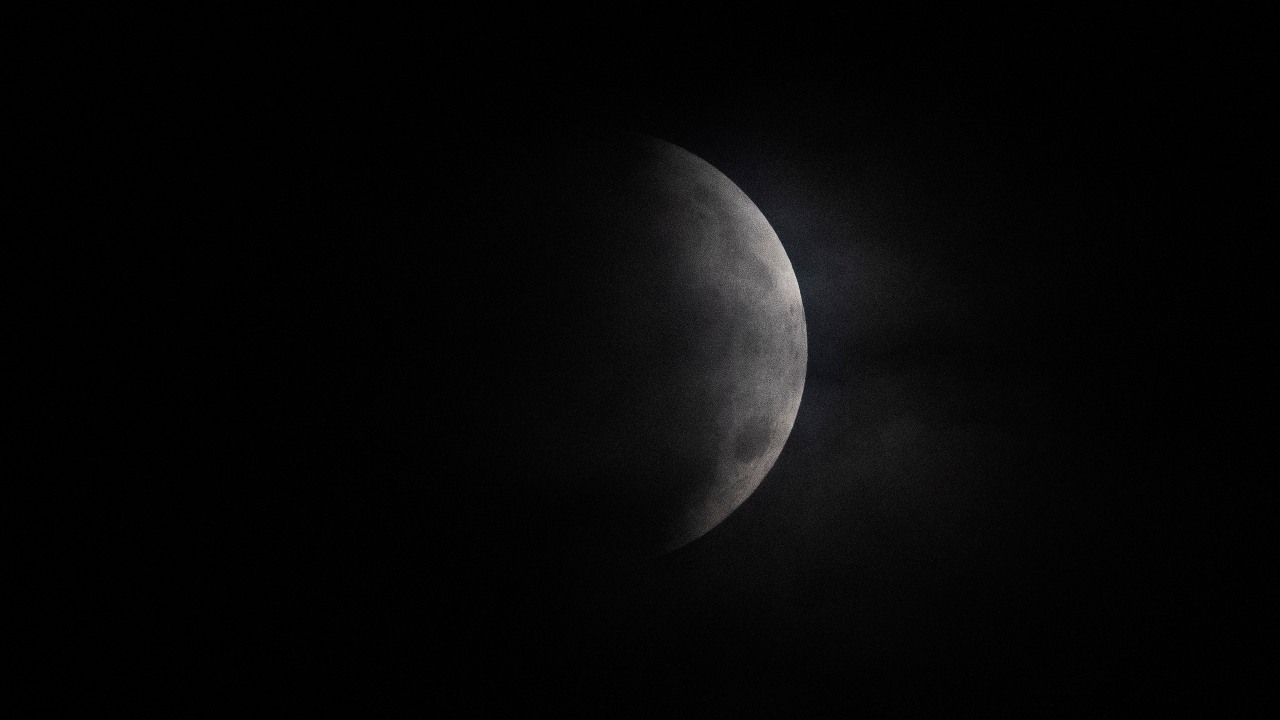 A lunar eclipse or a Chandra Grahan occurs when the moon moves into the Earth’s shadow and light from the Sun cannot fall on the moon. The moon is partially covered during a lunar eclipse over Mexico City, early Wednesday, May 26, 2021. (AP Photo/Marco Ugarte)[/caption] [caption id="" align=“alignnone” width=“1280”]
A lunar eclipse or a Chandra Grahan occurs when the moon moves into the Earth’s shadow and light from the Sun cannot fall on the moon. The moon is partially covered during a lunar eclipse over Mexico City, early Wednesday, May 26, 2021. (AP Photo/Marco Ugarte)[/caption] [caption id="" align=“alignnone” width=“1280”]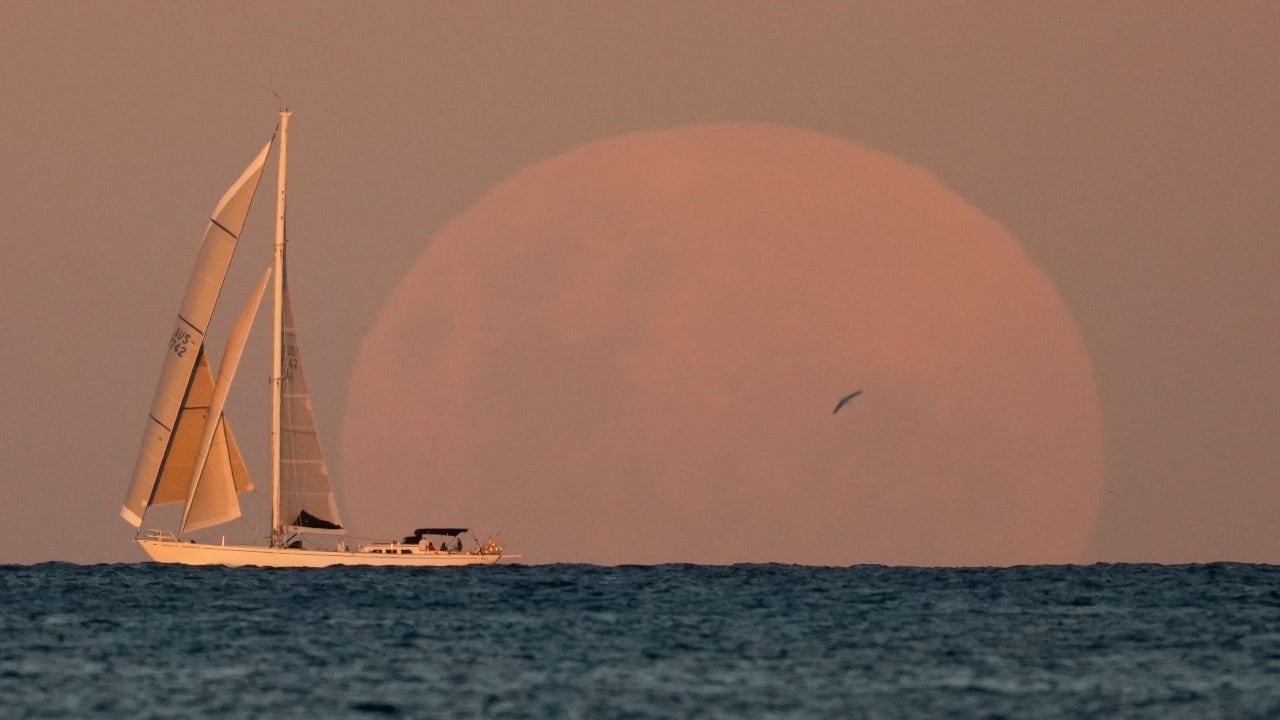 A yacht sails past as the moon rises in Sydney, Australia. Unlike a solar eclipse, there’s no harm in looking at an eclipsed moon. Image credit: AP Photo/Mark Baker[/caption] [caption id="" align=“alignnone” width=“1280”]
A yacht sails past as the moon rises in Sydney, Australia. Unlike a solar eclipse, there’s no harm in looking at an eclipsed moon. Image credit: AP Photo/Mark Baker[/caption] [caption id="" align=“alignnone” width=“1280”]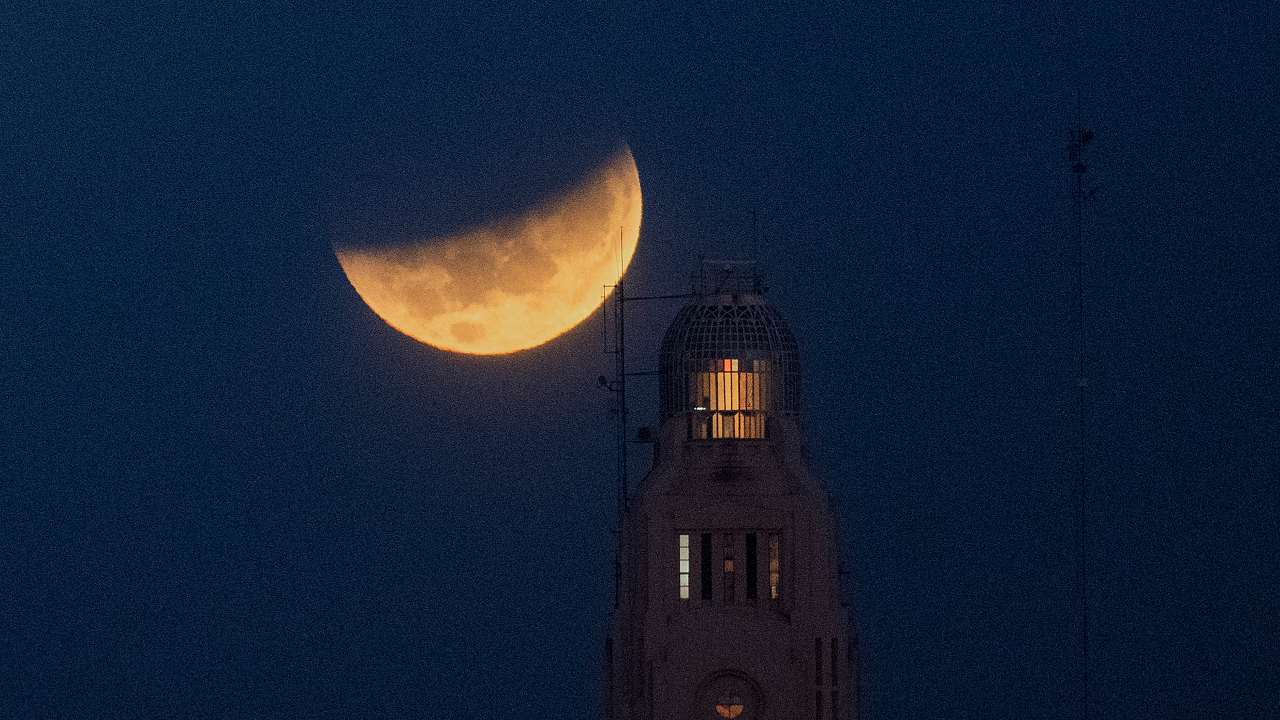 The moon sets behind the Montevideo port, in Uruguay. For a small period of time, the eclipse was visible from the northeastern parts of India (except Sikkim), some parts of West Bengal, some coastal parts of Odisha and Andaman and the Nicobar Islands. Image credit: AP Photo/Matilde Campodonico[/caption] [caption id=“attachment_9661051” align=“alignnone” width=“1280”]
The moon sets behind the Montevideo port, in Uruguay. For a small period of time, the eclipse was visible from the northeastern parts of India (except Sikkim), some parts of West Bengal, some coastal parts of Odisha and Andaman and the Nicobar Islands. Image credit: AP Photo/Matilde Campodonico[/caption] [caption id=“attachment_9661051” align=“alignnone” width=“1280”]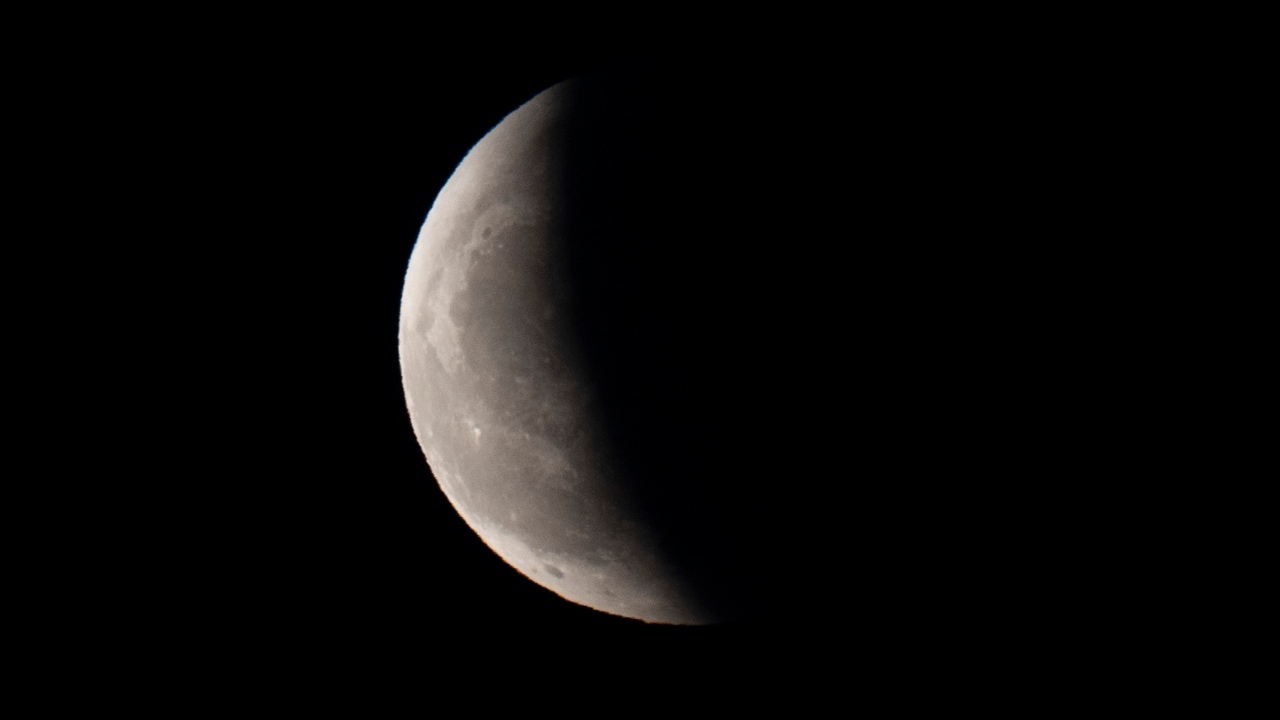 The earth’s shadow partially obscures the moon as it emerges from behind a cloud during a lunar eclipse in the skies over Beijing. China. Image credit: AP Photo/Ng Han Guan)[/caption] [caption id=“attachment_9661061” align=“alignnone” width=“1280”]
The earth’s shadow partially obscures the moon as it emerges from behind a cloud during a lunar eclipse in the skies over Beijing. China. Image credit: AP Photo/Ng Han Guan)[/caption] [caption id=“attachment_9661061” align=“alignnone” width=“1280”]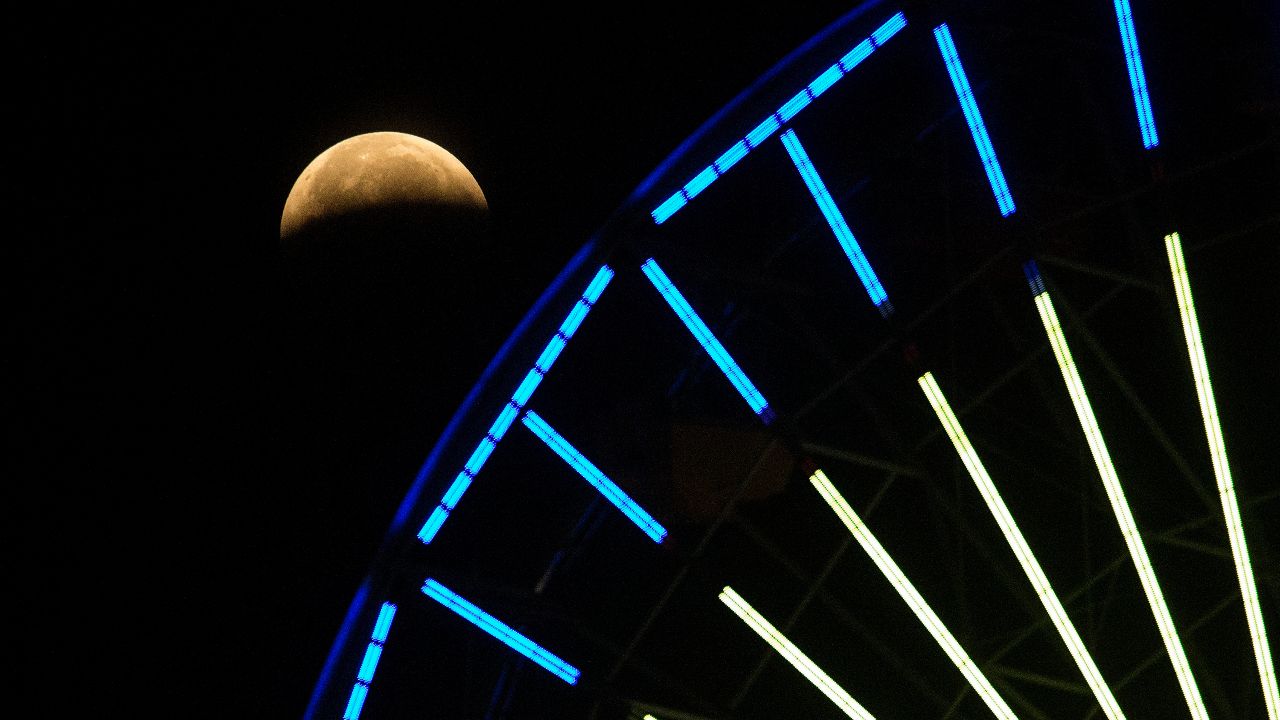 The first total lunar eclipse in more than two years coincided with a supermoon for a cosmic show and here it can be seen behind a ferris wheel in California, USA. (AP Photo/Ringo H.W. Chiu)[/caption] [caption id=“attachment_9661071” align=“alignnone” width=“1280”]
The first total lunar eclipse in more than two years coincided with a supermoon for a cosmic show and here it can be seen behind a ferris wheel in California, USA. (AP Photo/Ringo H.W. Chiu)[/caption] [caption id=“attachment_9661071” align=“alignnone” width=“1280”]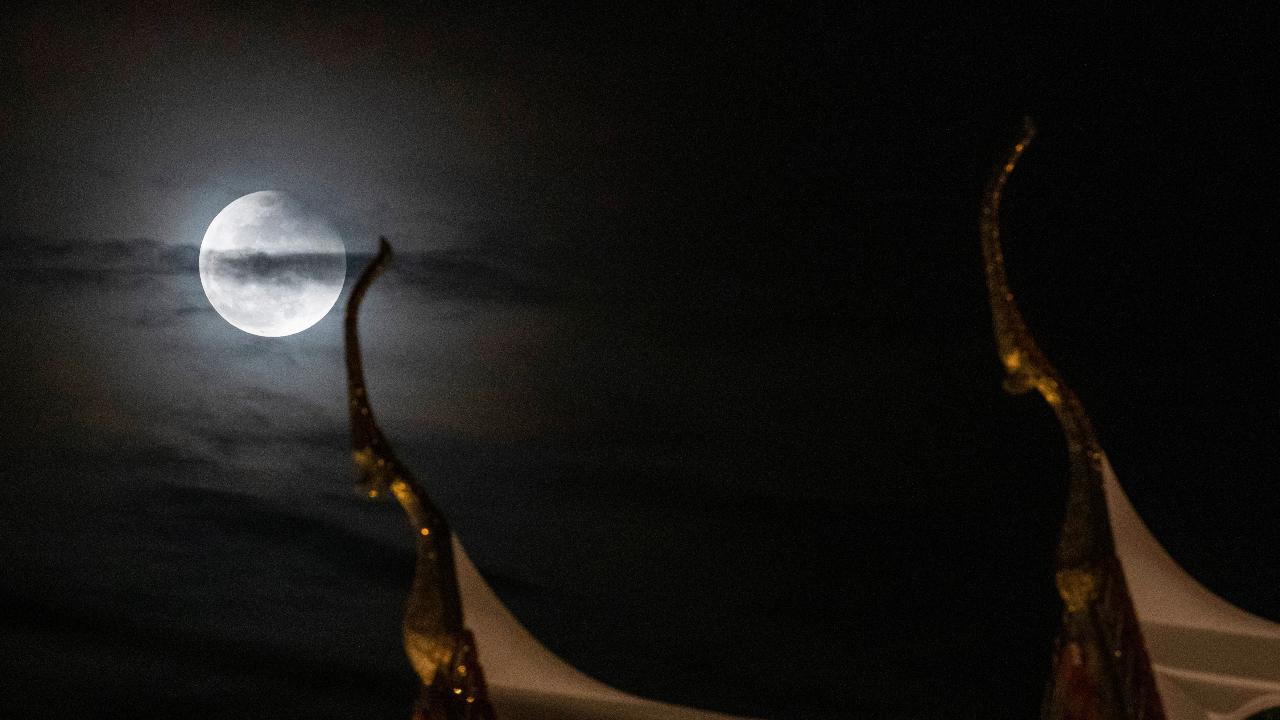 A moon is observed behind the Suthat temple in Bangkok, Thailand, (AP Photo/Sakchai Lalit)[/caption] [caption id=“attachment_9661121” align=“alignnone” width=“1280”]
A moon is observed behind the Suthat temple in Bangkok, Thailand, (AP Photo/Sakchai Lalit)[/caption] [caption id=“attachment_9661121” align=“alignnone” width=“1280”]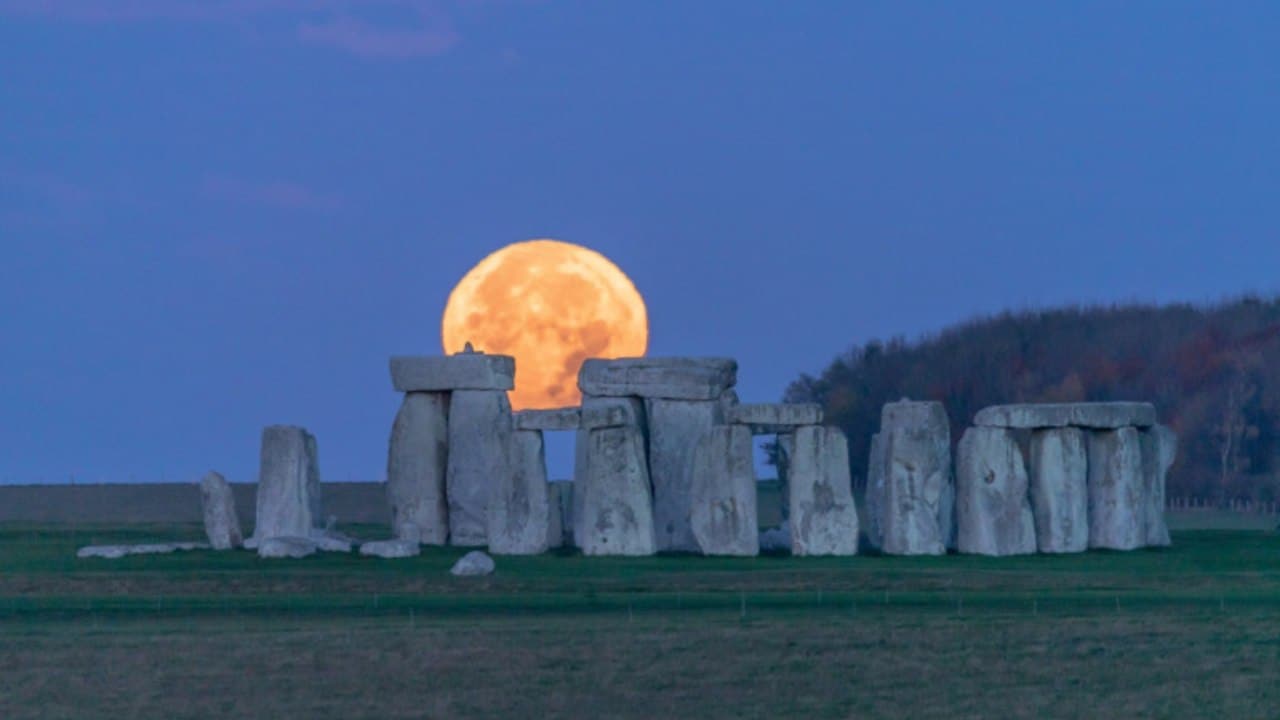 The blood moon is seen behind Stonehenge in the UK. Image credit: Twitter @ST0NEHENGE[/caption] [caption id="" align=“alignnone” width=“1280”]
The blood moon is seen behind Stonehenge in the UK. Image credit: Twitter @ST0NEHENGE[/caption] [caption id="" align=“alignnone” width=“1280”]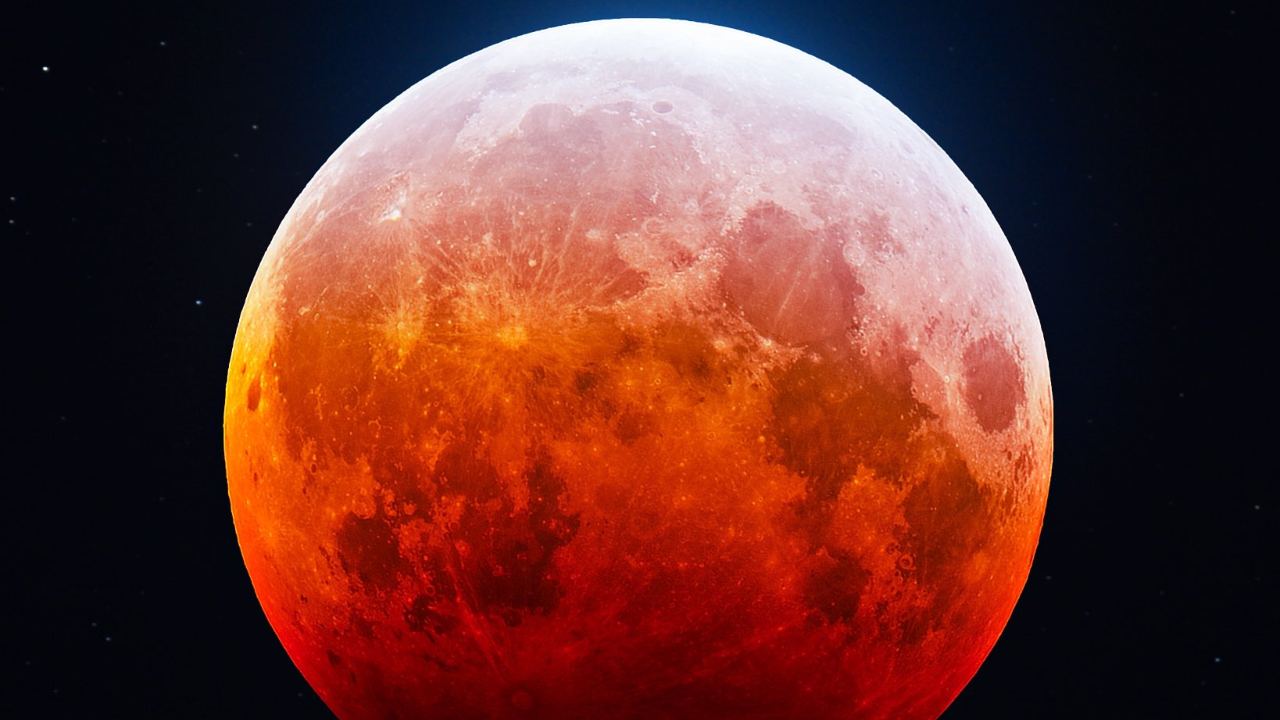 Aerospace engineer and astrophotographer Bray Falls captured the blazing red moon. Image credit: Twitter @astrofalls[/caption] [caption id="" align=“alignnone” width=“1280”]
Aerospace engineer and astrophotographer Bray Falls captured the blazing red moon. Image credit: Twitter @astrofalls[/caption] [caption id="" align=“alignnone” width=“1280”]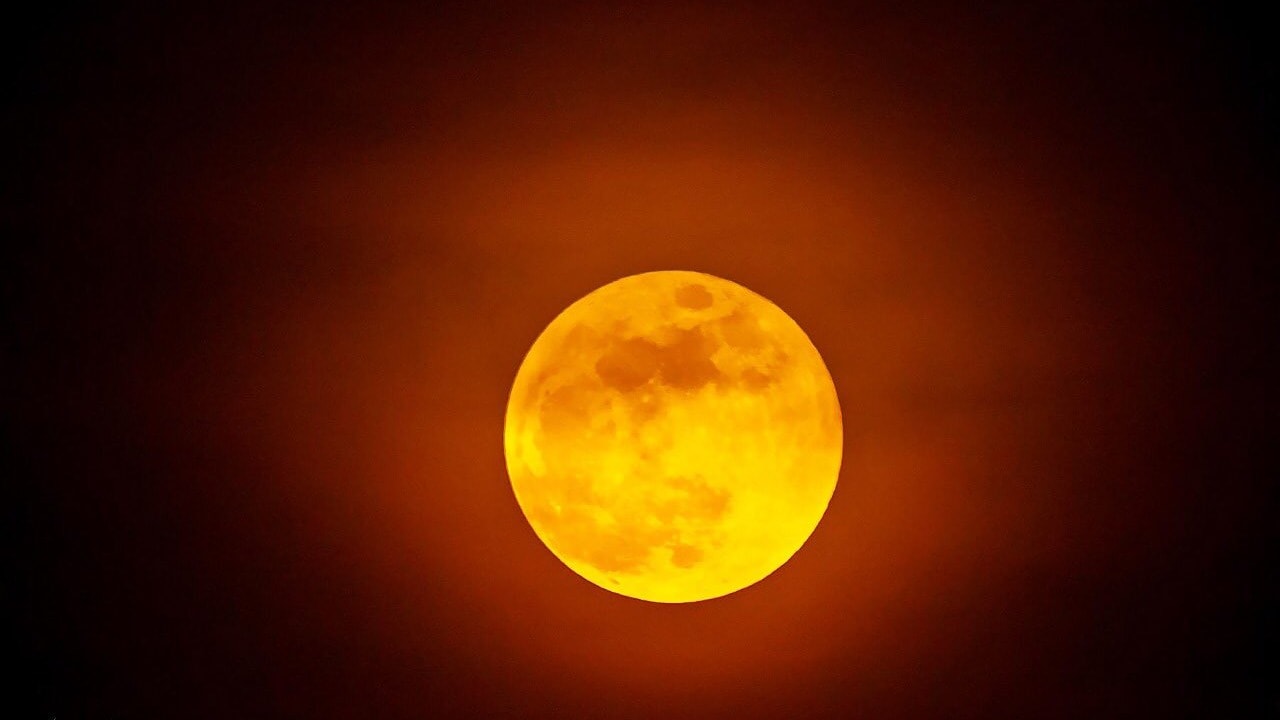 Indian Forest Service office shared images of the super blood moon as captured by Dr Vivek Banerjee. Image credit: Twitter @rameshpandeyifs[/caption] [caption id="" align=“alignnone” width=“1280”]
Indian Forest Service office shared images of the super blood moon as captured by Dr Vivek Banerjee. Image credit: Twitter @rameshpandeyifs[/caption] [caption id="" align=“alignnone” width=“1280”]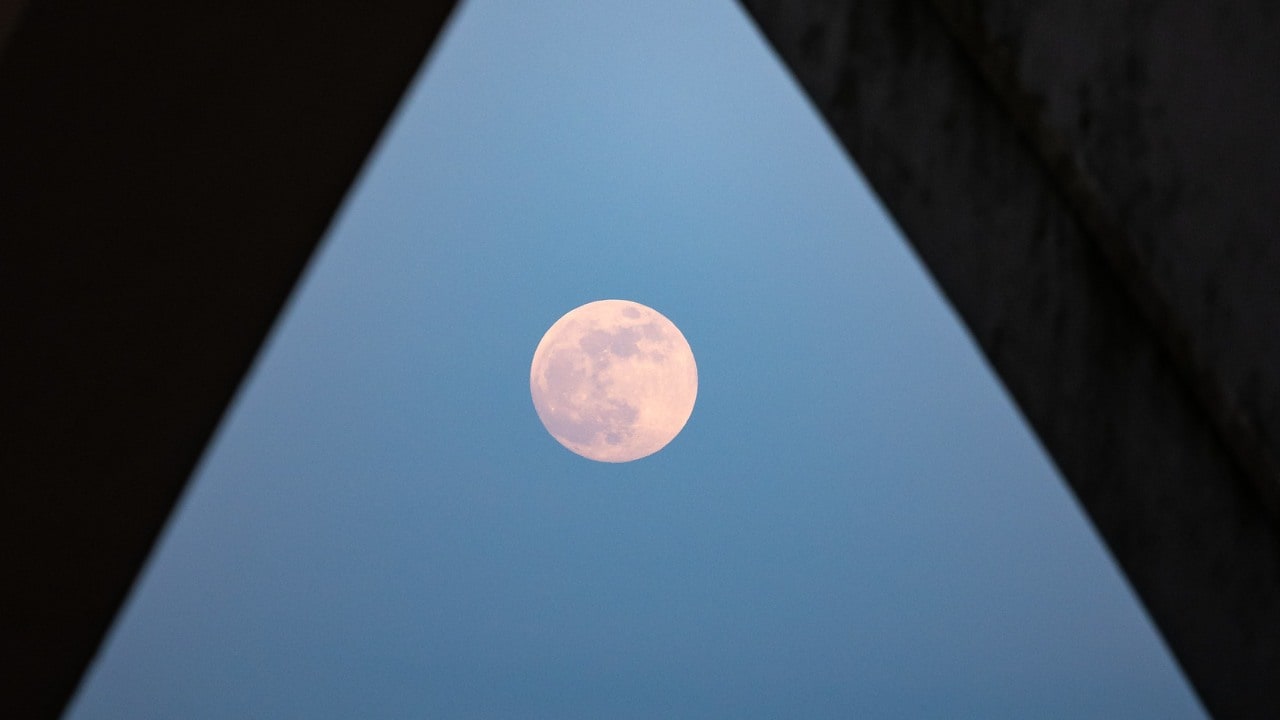 The Moonrise is seen from under the Woodrow Wilson Memorial Bridge in Virginia, USA. Image credit Flickr/NASA Bill Ingalls[/caption]
The Moonrise is seen from under the Woodrow Wilson Memorial Bridge in Virginia, USA. Image credit Flickr/NASA Bill Ingalls[/caption]
A lunar eclipse occurs when the moon moves into the Earth’s shadow and light from the Sun cannot fall on the moon.
Advertisement
End of Article


)

)
)
)
)
)
)
)
)



